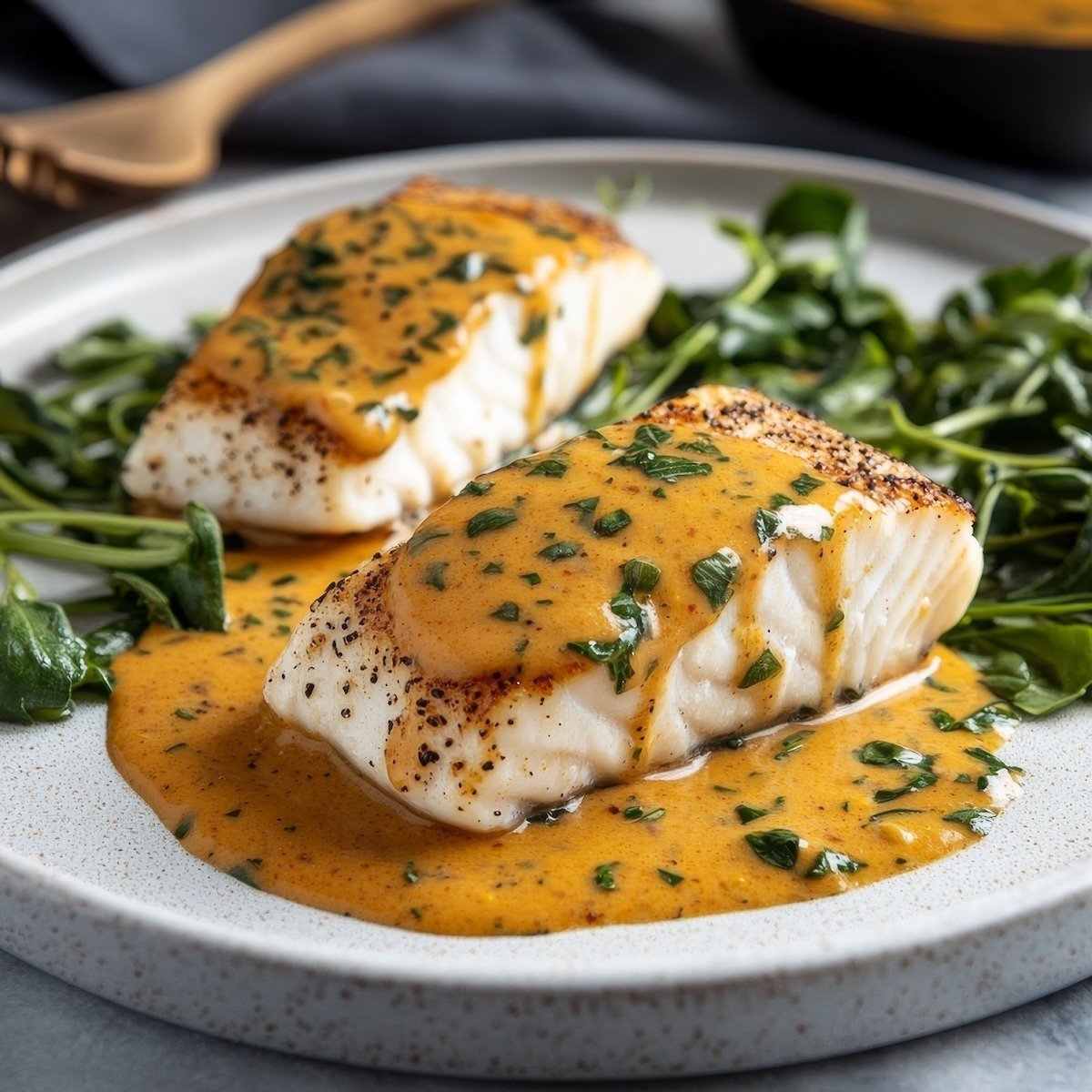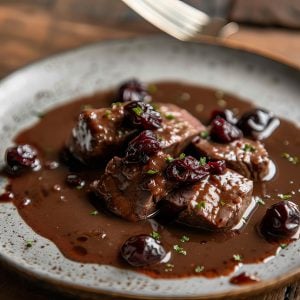How to Make Restaurant Quality Normandy (Normande) Sauce
Normandy sauce, a classic French creation, has long been celebrated for its rich and luxurious qualities, making it an ideal accompaniment for seafood dishes. Originating from the Normandy region, this sauce is typically crafted with butter, cream, and apples, offering a delicate balance of smooth and fruity flavors.
In its preparation, the sauce’s creaminess complements the tender textures of fish and shellfish, while the slight sweetness of the apples enhances the overall dish. Its velvety texture and subtle sweetness elevate the taste of seafood to an entirely new level.
Normandy sauce is often served with dishes such as sole or lobster. It is renowned for being versatile and adaptable to a variety of seafood preparations. Traditional recipes reduce cream and butter before adding apple brandy or cider, which adds depth and complexity. The apple imparts a gentle acidity, creating a harmonious contrast with the sauce’s richness.
Whether a beginner or an experienced home cook, the technique behind this sauce is easy to master and can be adapted to personal tastes, in this post, the recipe for Normandy sauce will be shared, demonstrating how this classic French sauce can be effortlessly recreated and used to enhance the flavors of seafood dishes.
History of Normandy Sauce
Normandy sauce is a classic French culinary creation deeply tied to the culinary traditions of the Normandy region in northern France. This area is known for its rich agricultural landscape, fertile soils, and coastal proximity, which provide an abundance of fresh seafood, dairy products, and apples—the key ingredients that define the sauce.
The sauce’s history reflects the region’s gastronomic influences, especially its emphasis on butter, cream, and apples. Its roots likely date back to the 19th century, when French chefs began experimenting with combinations of cream and butter to complement the delicate flavors of seafood.
Normandy, renowned for its dairy production, particularly its butter and cream, became the perfect backdrop for these rich, velvety sauces. The apple component, often cider or calvados (an apple brandy), was a natural addition due to the region’s famous apple orchards.
Normandy sauce became popular in French haute cuisine, particularly in dishes featuring fresh fish, such as sole and cod, as well as shellfish like lobster and scallops. Over time, it spread beyond Normandy and became a hallmark of French cuisine globally, known for its luxurious richness and balance of flavors. Today, the sauce is still cherished for elevating seafood dishes with a harmonious blend of cream, butter, and apples.
Why Seafood?
Normandy sauce pairs beautifully with seafood for several reasons, all rooted in its balance of flavors and textures. Here’s why:
- Richness and Creaminess: Normandy sauce’s butter and cream base adds a luxurious, velvety texture that complements seafood’s delicate, tender nature. Fish and shellfish often have subtle flavors, and the rich sauce enhances those flavors without overpowering them, providing a smooth mouthfeel that matches the soft texture of seafood.
- Mild Sweetness: The apple element in Normandy sauce, often in the form of cider or Calvados (apple brandy), brings a gentle sweetness and acidity. This sweetness contrasts beautifully with the natural brininess of seafood, especially shellfish like lobster, shrimp, and scallops. The fruitiness of the apples also adds a fresh, light note that balances the sauce’s richness.
- Acidity and Brightness: The slight acidity from the apples and apple brandy cuts through the fattiness of the butter and cream, preventing the sauce from becoming too heavy or overwhelming. This acidity provides a refreshing balance, lifting the seafood flavors while keeping the dish light and not overly greasy.
- Regional Harmony: Normandy’s coastal environment, known for its seafood, combined with its dairy and apple orchards, naturally led to the creation of a sauce that uses local ingredients to enhance the flavors of seafood. Combining fresh seafood with the region’s signature butter, cream, and apples creates a harmonious, regionally inspired pairing.
This perfect balance of creaminess, sweetness, acidity, and freshness makes Normandy sauce an ideal companion for seafood, elevating its flavors while maintaining a light and refined profile.
Note: To prepare this recipe, you’ll need to prepare Velouté sauce.

Normande Sauce Recipe
Ingredients
- ½ cup dry white wine
- ½ cup apple cider vinegar or Calvados - apple brandy
- ¼ cup fish stock or chicken stock
- 1 small shallot finely chopped
- ½ cup heavy cream
- ¼ cup unsalted butter cubed
- ¼ cup fresh apple peeled, cored, and diced
- salt and freshly ground pepper to taste
- fresh parsley finely chopped for garnish
Instructions
Prepare the base
- In a medium saucepan, combine the white wine, apple cider (or Calvados), fish stock, and finely chopped shallot. Bring the mixture to a simmer over medium heat. Let it reduce by about half, which should take about 5-7 minutes. This will intensify the flavors and remove the alcohol.
Add the cream
- Once the wine and stock mixture has been reduced, lower the heat to medium-low. Add the heavy cream and stir. Let the sauce simmer gently for an additional 3-5 minutes, allowing the cream to thicken slightly.
Incorporate the butter
- Gradually whisk in the butter, a few cubes at a time, until the sauce is smooth and creamy. This will help to thicken the sauce and give it that signature rich texture.
Add apples (optional)
- If using fresh apples, add the diced apple to the sauce now. The apples' slight sweetness and freshness will balance the sauce's richness. Let them cook for 2-3 minutes until tender but still holding their shape.
Season
- Taste and season the sauce with salt and freshly ground black pepper as needed.
Serve
- Pour the Normande sauce over your cooked seafood, such as pan-seared fish fillets, lobster tails, or shrimp. Garnish with finely chopped fresh parsley, if desired, and serve immediately
















